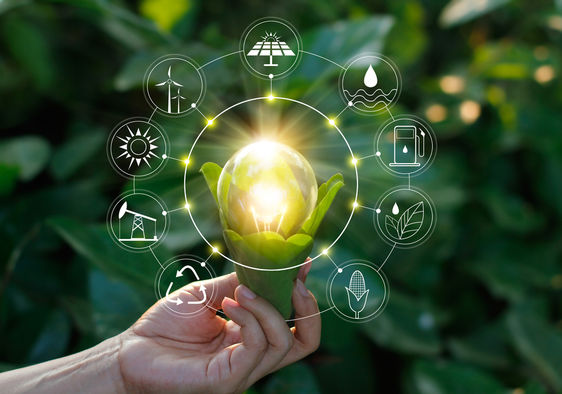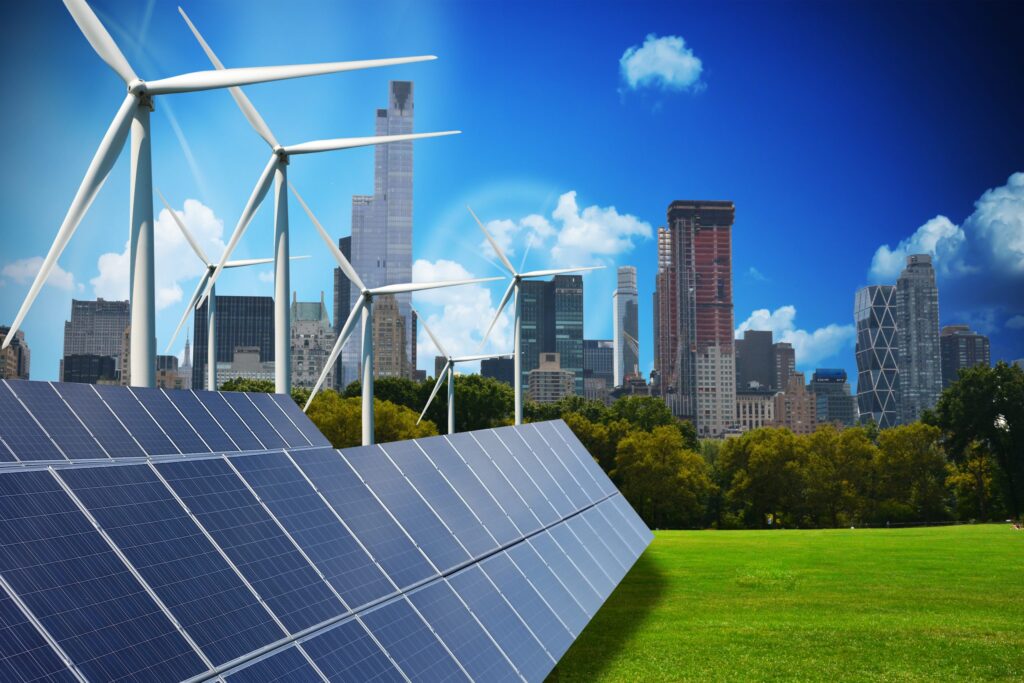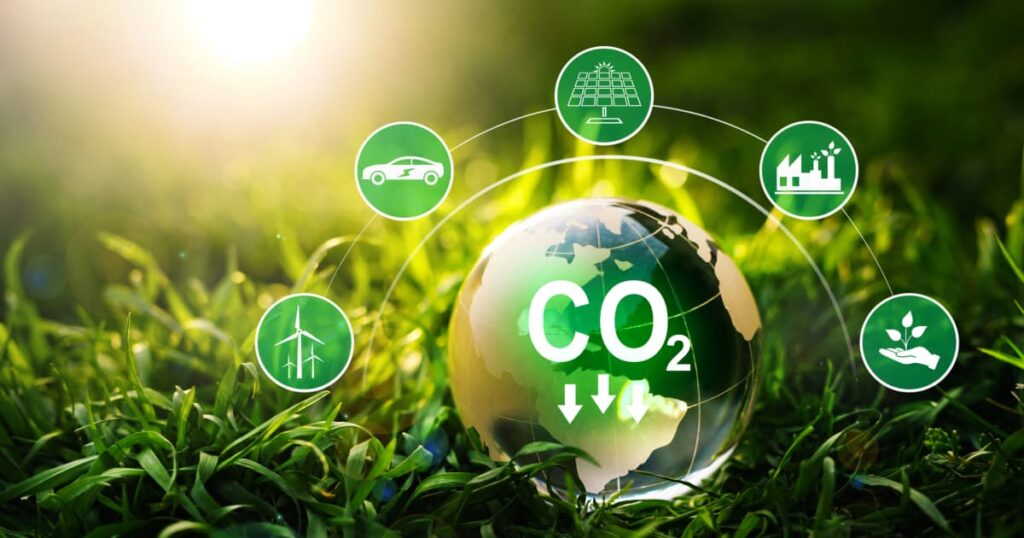Introduction
Green Technology: Its not just a word, its a revolutionary steps or science created for the most benefits for mankind. In this article you will get the complete knowledge on Green Technology. It’s importance topic in today’s world.At the end of the article you will get to know why it is an subject of discussion for the benfits of climate change. So enjoy reading the article and provide your valuable inputs for any changes or scope of improvement.

Definition and overview of Green Technology
Green Technology the use of science and technology to develop eco-friendly products and services that protect our environment. It includes renewable energy, sustainable transportation, waste management and recycling, energy efficiency solutions, all helping us move towards a more sustainable future.Through the integration of renewable energy sources, waste reduction techniques, energy-efficient designs, and eco-friendly manufacturing processes, green technology strives to minimize our ecological footprint.
Importance and relevance in today’s world
The importance of Green Technology in today’s world cannot be overstated. As the global population continues to grow and industrialization expands, the need for sustainable and eco-friendly solutions has become paramount. Green technology, also known as clean technology, plays a vital role in addressing environmental concerns, reducing carbon emissions, and conserving natural resources.

The Role of Green Technology in Energy Conservation
Green Technology plays a significant role in energy conservation by providing innovative solutions that reduce energy consumption, promote efficiency, and harness renewable sources. Its contributions in the realm of energy conservation are essential for mitigating climate change and reducing the environmental impact of energy production and consumption. Many green technologies aim to reduce emissions of carbon dioxide and other greenhouse gases in order to prevent climate change. Solar power is one of the most successful Green Technologies and is now cheaper to deploy than fossil fuels in many countries.
Renewable energy sources (solar, wind, hydro, geothermal)
Most renewable energy comes either directly or indirectly from the sun. Sunlight, or solar energy can be used directly for heating and lighting homes and other buildings, for generating electricity, and for hot water heating, solar cooling, and a variety of commercial and industrial uses.
The sun’s heat also drives the winds, whose energy, is captured with wind turbines. Then, the winds and the sun’s heat cause water to evaporate. When this water vapor turns into rain or snow and flows downhill into rivers or streams, its energy can be captured using hydroelectric power.
Along with the rain and snow, sunlight causes plants to grow. The organic matter that makes up those plants is known as biomass. Biomass can be used to produce electricity, transportation fuels, or chemicals. The use of biomass for any of these purposes is called bioenergy.
Hydrogen also can be found in many organic compounds, as well as water. It’s the most abundant element on the Earth. But it doesn’t occur naturally as a gas. It’s always combined with other elements, such as with oxygen to make water. Once separated from another element, hydrogen can be burned as a fuel or converted into electricity.
Not all renewable energy resources come from the sun. Geothermal energy taps the Earth’s internal heat for a variety of uses, including electric power production, and the heating and cooling of buildings. And the energy of the ocean’s tides come from the gravitational pull of the moon and the sun upon the Earth.
In fact, ocean energy comes from a number of sources. In addition to tidal energy, there’s the energy of the ocean’s waves, which are driven by both the tides and the winds. The sun also warms the surface of the ocean more than the ocean depths, creating a temperature difference that can be used as an energy source. All these forms of ocean energy can be used to produce electricity.

Advantages and challenges of each energy source
|
ADVANTAGES
|
DISADVANTAGES
|
|---|---|
| Renewable energy won’t run out. | Renewable energy has high upfront costs. |
| Renewable energy has lower maintenance requirements. | Renewable energy is intermittent. |
| Renewables save money. | Renewables have limited storage capabilities. |
| Renewable energy has numerous environmental benefits. | Renewable energy sources have geographic limitations. |
| Renewables lower reliance on foreign energy sources. | Renewables aren’t always 100% carbon-free. |
| Renewable energy leads to cleaner water and air. | |
| Renewable energy creates jobs. | |
| Renewable energy can cut down on waste. |
Impact on reducing carbon emissions and combating climate change
The impact of reducing carbon emissions through various means and combating climate change is crucial for the well-being of our planet. Green technology and sustainable practices play a vital role in this battle by addressing the causes and consequences of climate change. Here’s how reducing carbon emissions significantly affects the fight against climate change:
- Mitigating Global Warming: Carbon emissions, primarily from burning fossil fuels, contribute to the greenhouse effect, trapping heat in the Earth’s atmosphere. By reducing these emissions, especially carbon dioxide (CO2), the primary greenhouse gas, we can slow down global warming and its associated adverse effects.
- Preserving Ecosystems: High carbon emissions contribute to environmental changes that impact ecosystems, including changes in temperature, weather patterns, and sea levels. By reducing emissions, we can help preserve habitats, protect biodiversity, and support the well-being of various species and ecosystems.
- Improving Air Quality: Many of the activities that produce high carbon emissions also release pollutants that degrade air quality, leading to health problems. Lowering these emissions directly contributes to cleaner air and a healthier environment for all living beings.
- Adoption of Renewable Energy: Shifting from fossil fuel-based energy sources to renewable energy, such as solar, wind, and hydroelectric power, significantly reduces carbon emissions. These renewable sources generate electricity without emitting greenhouse gases, thus lessening the overall carbon footprint.
- Sustainable Practices and Technologies: Implementing sustainable practices, energy-efficient technologies, and green innovations across industries helps in reducing emissions. Energy-efficient buildings, transportation systems, and industrial processes contribute to significant reductions in carbon emissions.
- International and Local Policies: Governments and organizations worldwide have been implementing policies and regulations aimed at reducing carbon emissions. Agreements like the Paris

Green Technology in Transportation
Evolution of electric vehicles (EVs) and sustainable fuels
EV promptly can help decrease the “green house” gas emission and the dependence of fossil fuels. In this regard, electric vehicle is considered to be an optimal solution for the transportation due to the zero emission of exhaust gas but in the other hand it encounters many technical limitations.

Benefits of adopting eco-friendly transportation
1. Less Pollution and Clearer Skies
Every vehicle on the road releases an average of one pound of CO2 per mile driven. Compared with driving alone, taking public transportation reduces CO2 emissions by 45%, decreasing pollutants in the atmosphere and improving air quality. It’s estimated that public transportation in the U.S. saves 37 million metric tons of carbon dioxide annually, and even moderate increases in bicycle use each year could save an estimated 6 to 14 million tons .
2. Healthier Communities
Improved air quality in a community means greater health benefits for the people who live there. That can mean fewer cases of respiratory ailments such as asthma and even cancer. People are also more prone to get out and exercise when the air quality is better.
3. Harmful Chemicals Are Reduced
We usually think of gas as the only pollutant when it comes to cars, but they also use antifreeze and other fluids that are bad for the environment. Taking sustainable transportation instead of driving cuts down on all of them.
4. Fewer Cars Equal Fewer Roads
More cars mean more roads need to be built, which causes water run-off that contributes to ground and water pollution. Fewer cars in favor of active transportation such as bikes mean more bike paths and lanes which are more sustainable.
5. Noise Is Also Pollution
We rarely think of noise pollution when it comes to cars, that is unless you live by a busy street. Less driving will make your neighborhood quieter to everyone’s benefit.
Sustainable Construction and Smart Buildings
Sustainable construction and smart buildings represent two interconnected and critical aspects of modern architecture and urban development. They both focus on enhancing the efficiency, resilience, and environmental friendliness of structures.
Sustainable construction involves the use of materials and techniques that minimize the environmental impact of buildings throughout their lifecycle. This includes reducing energy consumption, optimizing water usage, utilizing eco-friendly materials,( Ex: Eco Bricks) and implementing design principles that support environmental conservation. Some common practices in sustainable construction include using renewable energy sources like solar panels, incorporating natural lighting and ventilation, employing recycled or locally sourced materials, and creating designs that minimize waste generation.
Eco-friendly construction materials and techniques
- Stone:Living in a stone structure is low maintenance and eco-friendly, and any extra stone leftover from the build can be used for home finishings such as countertops or tile.
- Cob: It is an ancient natural building material consisting of clay, sand, and straw in varying proportions to create a rock-hard, finished structure. The cob mixture can be used to create a wide array of structures including: cottages, benches, garden walls, ovens, and houses
- Bamboo: Bamboo is a tall tropical plant with hard, hollow stems. The young shoots of the plant can be eaten and the stems are used to make furniture.
- Cork: Cork is the outermost covering of old stems or trees. It is produced from epidermal cells. It is also known as phellem.
- Adobe brick: Adobes are dried mud or unburned bricks that have been used for thousands of years in the construction of dwellings and bther structures. Even today the majority of the people in the world use mud-brick construction.
- Straw bale: Straw bale building typically consists of stacking rows of bales (often in running-bond) on a raised footing or foundation.
- Cordwood: Cordwood construction is a term used for a natural building method in which short logs are piled crosswise to build a wall, using mortar or cob.
- Earth bags: Earthbag building uses polypropylene rice bags or feed bags filled with soil or insulation that are stacked like masonry and tamped flat.
Energy-efficient building designs and systems

Advantages for reducing energy consumption and Promoting sustainability Green Technology in Agriculture

Sustainable farming practices and precision agriculture
Precision ag technologies and practices help farmers reduce the amount of inputs they use, which can help reduce the risk of environmental pollution. Precision ag technologies can help farmers monitor and manage their crops more effectively, which can help reduce the risk of pests and diseases and improve soil health.
Sustainable Farming Practices:
- Crop Rotation: Alternating the types of crops grown in a particular area season by season helps maintain soil health, prevents the depletion of nutrients, and reduces pest and disease pressure.
- Conservation Tillage: Minimizing soil disturbance by reducing or eliminating tillage helps to conserve soil moisture, prevent erosion, and maintain soil structure.
- Integrated Pest Management (IPM): Employing a combination of techniques such as biological control, crop rotation, and targeted pesticide use to manage pests while minimizing environmental impact.
- Water Conservation: Efficient water management techniques like drip irrigation, rainwater harvesting, and soil moisture monitoring help conserve water resources and reduce waste.
- Agroforestry: Integrating trees and shrubs with crops or livestock can enhance biodiversity, improve soil health, and provide additional revenue streams.
- Organic Farming: Using natural fertilizers, avoiding synthetic chemicals, and focusing on biodiversity to enhance soil quality and produce healthier crops.
Precision Agriculture:
- Remote Sensing: Using technologies like drones, satellites, and sensors to gather data on crop health, soil conditions, and weather patterns. This information helps farmers make informed decisions.
- Variable Rate Technology (VRT): Applying inputs such as water, seed, fertilizer, and pesticides at varying rates across a field based on real-time data, optimizing resource use.
- GPS Technology: Integrating GPS systems to precisely map and manage field activities, enabling accurate planting, spraying, and harvesting while reducing overlap and waste.
- Data Analytics: Employing big data analysis to interpret information collected from various sources to make informed decisions about crop management, resource allocation, and predictive analysis.
- Robotics and Automation: Using robots for tasks like planting, weeding, and harvesting to improve efficiency and reduce labor costs.
Role in addressing food security and environmental impact
Sustainable farming practices and precision agriculture are crucial elements in modern agricultural techniques aimed at improving efficiency, reducing environmental impact, and ensuring long-term viability in food production.
Sustainable Farming Practices:
- Crop Rotation: Alternating the types of crops grown in a particular area season by season helps maintain soil health, prevents the depletion of nutrients, and reduces pest and disease pressure.
- Conservation Tillage: Minimizing soil disturbance by reducing or eliminating tillage helps to conserve soil moisture, prevent erosion, and maintain soil structure
Circular Economy and Waste Management
It is a change to the model in which resources are mined, made into products, and then become waste. A circular economy reduces material use, redesigns materials, products, and services to be less resource intensive, and recaptures “waste” as a resource to manufacture new materials and products.
Promoting the use of biodegradable materials
Promoting the use of biodegradable materials is a critical step towards reducing environmental impact and advancing sustainability in various industries. Biodegradable materials decompose naturally, breaking down into non-toxic elements and returning to the environment without leaving harmful residues. Here are several reasons why promoting biodegradable materials is essential:
- Reduced Environmental Pollution: Biodegradable materials break down naturally over time, reducing the accumulation of waste in landfills, oceans, and natural habitats. This minimizes pollution and its detrimental effects on ecosystems and wildlife.
- Conservation of Resources: Biodegradable materials often come from renewable resources, such as plant-based sources, which helps in reducing the dependence on finite, non-renewable resources.
Recycling, reuse, and waste reduction strategies

Challenges and Obstacles in Adopting Green Technology
The adoption of green technology faces several challenges and obstacles that impede its widespread implementation. Some of the key challenges include:
- High Initial Costs: Green technologies often require significant upfront investments. The initial costs of implementing renewable energy sources, installing new machinery, or transitioning to sustainable practices can be prohibitive for many businesses and individuals.
- Lack of Financial Incentives: In some regions, the absence of subsidies, tax breaks, or other financial incentives for adopting green technology discourages investment. Without government support or financial benefits, the transition to green solutions might seem financially unviable for many.
- Technological Limitations: The current state of green technology might still be underdeveloped or not as efficient as conventional technologies. This can limit its adoption, especially in industries where high performance and reliability are critical.
- Resistance to Change: Resistance to change from traditional methods and a lack of awareness about the benefits of green technology among stakeholders can slow down its adoption. This resistance can be seen in both consumer behaviors and within industries.
- Infrastructure Challenges: In certain cases, adopting green technology may necessitate infrastructure changes, such as building new grids for renewable energy sources. This requires substantial planning, investment, and time.
- Skills and Training Gaps: The successful implementation of green technologies often requires specific skills and training. The lack of a skilled workforce trained in these new technologies can pose a barrier to their adoption.
- Limited Accessibility and Availability: In some regions, access to certain green technologies or resources might be limited. For example, rural areas might struggle to access renewable energy sources or technologies due to insufficient infrastructure.
- Regulatory and Policy Hurdles: Regulations and policies might not be fully supportive or conducive to the adoption of green technology. Complex or unclear regulations can deter businesses from investing in new, sustainable solutions.
Policy and regulatory challenges
Policy and regulatory challenges in the realm of Green Technology encompass a variety of complex issues that impede the development, adoption, and widespread implementation of environmentally friendly technologies. These challenges can be multifaceted, impacting various sectors and levels of governance. Some of the key hurdles include:
- Lack of Consistent Standards: Setting uniform standards and regulations across different regions and countries is a significant challenge. Varying regulations often make it difficult for companies to scale green technology solutions.
- Financial Barriers: The high initial costs associated with implementing Green Technology deter many businesses and individuals. Limited access to financing, subsidies, or incentives for adopting sustainable technologies is a considerable obstacle.
- Policy Inconsistencies: Shifting political climates can lead to inconsistencies in policies and regulations, causing uncertainty in the market. Sudden policy changes can significantly impact investments in green technology.
- Infrastructure Compatibility: Green Technology often requires compatible infrastructure to be effective. Updating or overhauling existing infrastructure to accommodate these new technologies can be expensive and time-consuming.
Importance of public awareness and collective responsibility
Public awareness and collective responsibility play crucial roles in the successful adoption and advancement of green technology for several reasons:
- Behavioral Change: Public awareness fosters understanding of the environmental challenges we face and the potential solutions offered by green technology. It encourages individuals to adopt eco-friendly practices and technologies in their daily lives, thus contributing to a sustainable future.
- Demand Generation: When people are aware of the benefits and importance of green technology, there’s an increased demand for such solutions. This demand, in turn, incentivizes businesses and industries to invest in and develop more sustainable products and technologies.
- Policy Support: Public awareness and support are influential in shaping governmental policies. When the public demonstrates a clear interest in sustainability, policymakers are more likely to implement regulations and incentives that support the development and adoption of green technologies.
Conclusion
In conclusion, Green Technology stands as a beacon of hope in addressing our pressing environmental challenges. Its significance lies not just in offering solutions but in fundamentally transforming our approach to development, production, and consumption. The adoption and advancement of Green Technology are pivotal for a sustainable and resilient future
